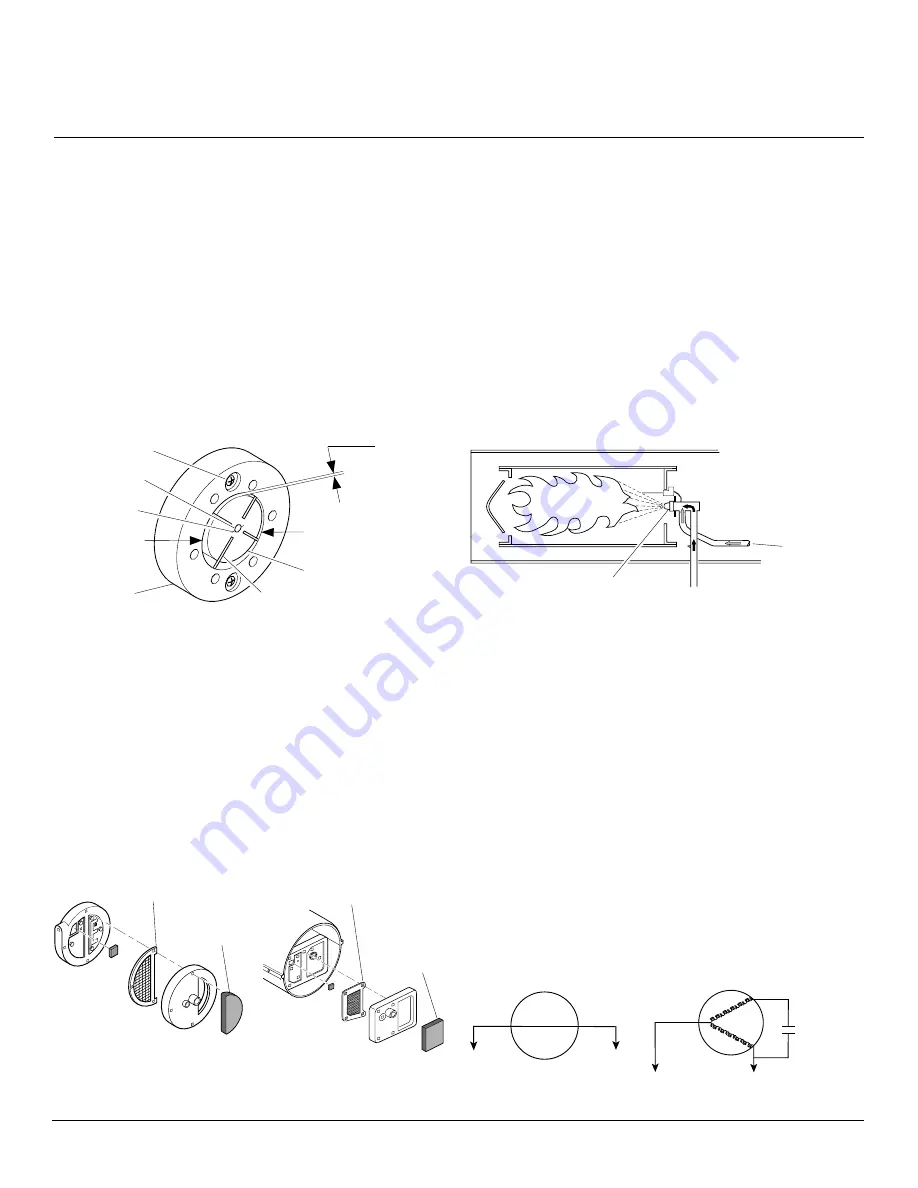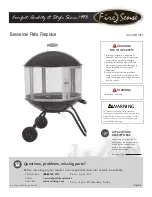
7
Hot Surface Ignition Models Service Manual
COMPONENT OPERATION
I.
AIR SYSTEM
1. Air Pump
The heater's air pump consists of a rotor with four carbon
blades rotating inside a pump body. The rotor is driven directly
by the motor and is attached to the motor shaft by means of
a plastic insert. As the motor rotates, the carbon blades travel
outward rubbing against the inside surface of the steel pump
body. The rotor's position inside the pump body is such that
it is not concentric with the pump body and a .003/.004 of an
inch gap is set at the uppermost quadrant. As the motor
rotates, the air between the blades is compressed and routed
to the nozzle through the air line.
2. Air Filters
The air filtering system consists of an air input filter and an air
output filter. The air input filter is located at the right rear of the
motor and its purpose is to filter all incoming air prior to
entering the air pump. The filter design is such that it can be
cleaned in a mild, soapy solution, thoroughly dried and used
over again. The air output filter is located under the plastic end
cover. This filter's purpose is to prevent any carbon dust (from
rotor or blade wear) from entering the air passages in the
nozzle. This filter is non-cleanable and should be replaced
when considerable buildup of carbon dust is observed. (See
drawings below).
Gap Adjusting
Screw
Blade
Pump Body
Air Intake Side
Air Output
Side
.003/.004
Clearance
Measured
with Feeler
Gage
Rotor
Motor Shaft
Insert
Direction of Rotation-Clockwise
35,000, 50,000, 55,000, and
70,000 BTU
Filter System
110,000, 115,000, 150,000,
155,000, 165,000, and 200,000
BTU Filter System
Air Output Filter
Air Input
Filter
Air Output Filter
Air Input
Filter
3. Nozzle
As mentioned previously, the purpose of the air pump is to
compress air and deliver it to the nozzle. The compressed air,
as it travels through the nozzle, creates a negative pressure
that extends back through the center of the nozzle. This
negative pressure lifts the fuel from the fuel tank. The fuel from
the fuel tank and the compressed air are mixed at the nozzle
which results in a very fine mist of fuel being sprayed into the
combustion chamber. The air pump/nozzle combination elimi-
nates the need for a conventional type fuel pump. It is
important for the service technician to understand the nozzle
operation. In many cases concerning improper operation of a
heater, the problem is the result of a seal leak or a restriction
(dust/dirt) being present within the nozzle. It should also be
pointed out that each model heater requires different nozzles
due to different fuel flow rates.
Nozzle Face
Compressed
Air From
Pump
Fuel Lifted From Tank
by Negative Pressure
II. ELECTRICAL SYSTEM
1. Motors
The motors used on the low pressure heaters are fractional
horsepower motors ranging from 1/15 HP on the smallest
heater to 1/4 HP on the largest heaters. The motors used can
be grouped into two categories. The first category is the
shaded pole motor. The shaded pole motor contains a single
winding and does not require an integral start/run capacitor for
operation. This type of motor is used on 35, 40, 50, 55, and 60
model heaters.
The second category is the permanent start capacitor motor.
This motor contains two separate windings. The first winding
being the auxiliary or start winding and the second being the
main or run winding. This motor utilizes an integral start/run
capacitor which is wired internally and cannot be replaced.
This type of motor is used on the 70, 110, 115, 150, 155, 165,
and 200,000 Btu models.
MOTOR
AC LINE
AC LINE
CAPACITOR
AUX
MAIN
Shaded Pole Motor
Permanent Start Capacitor Motor
For replacement parts contact:
www.PartsFor.com








































